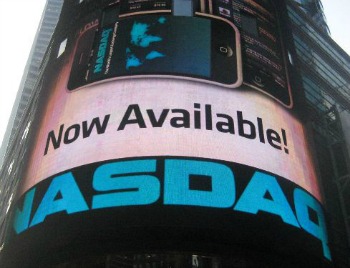
Nasdaq OMX Group said Wednesday that it will be able to launch its planned program for paying market makers to trade in particular exchange-traded funds.
The Market Quality Program will launch by the end of June, Nasdaq OMX said Wednesday. The Securities and Exchange Commission in March approved the plan on a pilot basis.
Under the program, sponsors of exchange-traded funds will be able to contribute funds to Nasdaq, which in turn can be used to pay market makers to incent them to handle particular funds.
The sponsor will pay Nasdaq OMX an annual fee of $50,000 to $100,000 per ETF, in addition to standard listing fees. The market quality program fee can get rebated, under certain circumstances. Rebates will be made quarterly.
Payments, according to a note to traders, will be made if a market marker :
- Maintains quotes at or better than the National Bid and Best Offer (NBBO) for 25% of the trading day for 500 shares;
- Posts a market with a bid no less than 2% away from the best bid and an offer that is no greater than 2% away from the best offer 90% of the trading day; and
- Provides an aggregate of 2,500 shares of displayed liquidity on the bid side and an aggregate of 2,500 shares of displayed liquidity on the offer side.
An ETF is no longer in the program when trading achieves average volume of 1 million shares a day for three months in a now.
About 93 percent of U.S. ETFs and exchange-traded notes, a total of 1,342, traded fewer than 1 million shares a day on average in January and February, according to data compiled by BlackRock, issuer of iShares ETF shares.
The approval of Nasdaq’s plan, even on a pilot basis, ends a ban on compensating companies for making markets in particular securities. That ban has been in place since 1997.
Proponents of compensating market makers say new incentives are needed, as electronic trading has pushed down spreads on securities and the commissions and fees that are generated.
“However, there are other ways to provide those incentives,’’ said James J. Angel, capital markets professor at Georgetown University, in a comment on the Nasdaq plan to the SEC. “Permitting issuers of all securities, not just ETFs, to compensate market makers would be a good idea.’’
NYSE Arca, which is home to 1,328 of the 1,442 ETFs listed on U.S. exchanges, is also planning a similar program.
In a filing with the Securities and Exchange Commission last week, Arca changed the name of its “Fixed Incentive Program” to the “ETP Incentive Program;” limited the size of the program, described the quoting obligations for those market makers involved and addressed a Financial Industry Regulatory Authority rule that prohibits the practice.
The changes are in response to concerns by the SEC and industry participants that Arca’s original proposal—submitted a year ago—was too broad, ran afoul of FINRA rules and did not require enough of the market maker participants.
Under the program, issuers of exchange-traded products would contribute between $10,000 and $40,000 per year to a dealer to quote two-sided markets in their securities. NYSE Arca would facilitate the transfer of funds between the issuers and the lead market makers for their products.
The first out of the box was BATS Global Markets, with its Competitive Liquidity Provider program.
That program provides incentives for market-making firms to provide a continuing stream of quotes on exchange-traded products that are “inside” the best bid or offer on any venue where shares are traded.
As BATS chief operating officer Chris Isaacson describes it, the market-maker who provides the best flow of quotes – in price and size — to buy or sell shares in a given security in a given day will get 80% of the reward, say $200 a day.
The second place “winner” gets the other 20%. Finish atop the leaderboard consistently over time and over multiple ETFs and you’re talking real money.



